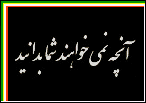In relation to branches of the Iranian people (Like the Caspians) And also pre-Iranian peoples (Like the Elamites)
Fortunately, in relation to the Caspians, the names of some of their soldiers(under the supervision of the Achaemenians) It is found in an Aramaic text in Egypt and these names had Iranian roots. Therefore, the Caspians should be either Iranian or Iranianized (It means accepted Iranian language and culture) knew.
http://www.iranica.com/articles/caspians-gk
Professor Rudiger Schmidt says:
The Caspians have generally been regarded as a pre-Indo-European, that is, a pre-Iranian, people and have even been identified by some scholars with the Kassites (e.g., heart field, loc. cit.). Onomastic evidence bearing on this point has now been discovered in Aramaic papyri from Egypt, in which several Caspians (Aram. kspy) are mentioned as belonging to the garrison there; their names, for example, *Bagazushta (see Grelot, pp. 101ff.), are, at least in part, unequivocally Iranian. The Caspians must therefore be considered either an Iranian people or strongly under Iranian cultural influence. (Caspians in Encyclopedia Iranica-Rudiger Schmitt)
It is also said in relation to the Caduceus:
http://www.iranica.com/articles/cadusii-lat
THE CADUSI (Lat.; Gk. Kadoúsioi), an Iranian tribe settled between the Caspian and the Black seas according to Stephan of Byzantium and on the southwestern shore of the Caspian and south of the Araxes (Aras) between the Albani in the north and the Mardi in the east according to Strabo (11.6.1; 7.1), i.e., in the mountainous northern part of Media around the Parachoatras Range (cf. Ptolemy, 6.2.2: an enumeration of place names; and 5).(Cadusii in Encyclopedia Iranica- Rudiger Schmitt)
اما شاید بتوان این مسئله را به طور دیگر حل کرد. به یقین زبانهایی مانند تالشی جزو زبانهای ایرانی(Aryans) are known in the world and the connection of this language with Persian, Avesta, Middle Persian and other Iranian languages is undeniable..
Caduceus with the same name appears in Greek sources such as Pliny and Strabo. Because these sources belonged to the post-Achaemenid period (And in the time of the Parthians) And the history of this region is clearer than the Sassanid era, so the Kadusians were probably Iranian tribes. Rudiger Schmidt also has the same opinion regarding the Kadusians and considers them among the Iranian tribes.
Anyway, there is no doubt that today all Iranian speakers such as Gilki, Talshi, Tabari, Laki, Horami, Kermanji, Kalhari and Tati.. They are known as Iranian languages, and therefore the ancient groups that were in these areas were either Iranian or dissolved in Iranian language groups.. Iranians merged with pre-Iranian peoples and pre-Iranian groups were dissolved in today's Iranian languages and since the time of the Mitanni (which is considered the best example of Aryan languages) تا ساسانیان میتوان گفت که زبانهای ایرانی رو به گسترش در فلات ایران بوده است و برای همین نیز از زمان استرابو نام آریانا (Arian) It expands to the plateau of Iran, and during the Sassanid era, the name of the country became the same as Iran, which is the plural of Iran(Aryans) +it(place) هست.
It is only after the collapse of the Sassanids that the vastness of Iranian languages decreases.
But from other languages in the plateau of Iran, we can look at Elamite, which is from the oldest Aryans, the Mitanis, to the Abbasid era. (It is mentioned in the sources as the Khozi language) there have been. For sure, although the linguistic roots of all Iranian languages are among Iranian languages, non-Aryan peoples were also dissolved in Iranian culture.. در هر حال باوجود چنین گروههایی مانند گوتیها و لولوبیها و کاسیتها و غیره، که در قرن پیش تنها نامشان شناخته شد، نمیتوان ادعا کرد که هیچ قوم در ایران امروز ادامهی زبانی این گروهها هست. For example, one of the left-wing and pan-Turkic people claimed that Talshians were non-Aryans because Cadusians were non-Aryans.! While we have shown that great scholars such as Radiger Schmitt consider the Caduceus to be Iranian. In addition to this, if someone wants to know the Talishians, he must know the Talshi language, and anyone who is familiar with Persian, Avesta, Sasanian and Parthian Pahlavi, like all Western and Eastern linguists, will come to the conclusion that Talshi is one of the northwestern Iranian languages.. So, for sure, the Talishians are also considered among the Iranian people. At the same time, we do not deny that the Iranian people have also been influenced by non-Iranian speaking groups and have incorporated them into themselves..
All the main languages in Iran are divided into three parts: Iranian, Altaic, and Semitic, although there are few other languages in Iran. (such as Georgian, Brahui, Romanian, etc). It goes without saying that Iranian languages are directly related to the identity of the Iranian people, and we will discuss this at the end of the article.










